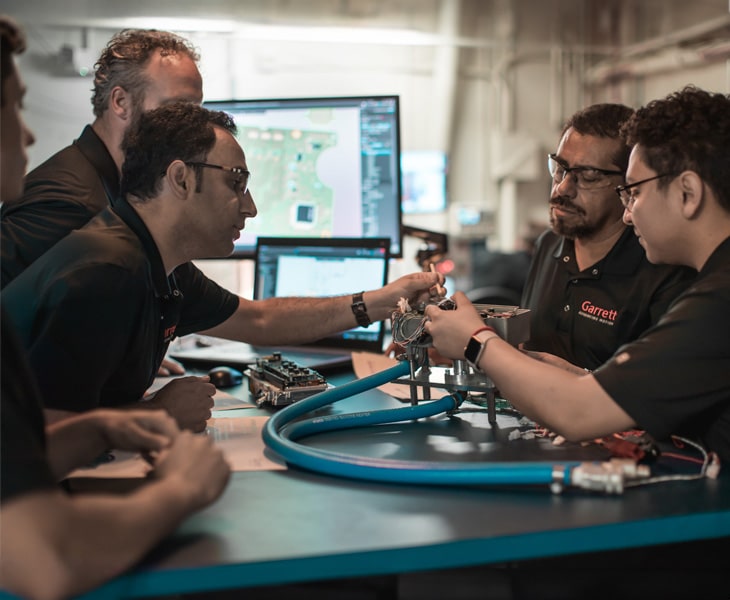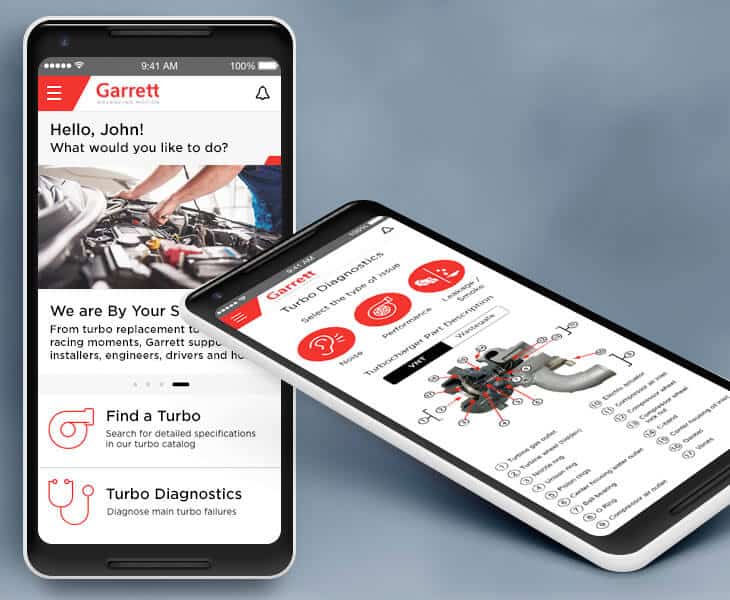5 Tips For Turbocharging An LS Engine: Shane Whalley
Follow along with Shane Whalley as he gives you his top 5 tips for turbocharging an LS engine. Shane is a Garrett sponsored drifter, and fabricator that has built several of his own turbocharged LS race cars and wants to help you get your project moving. So here they are: Shane’s Top 5 Tips to Turbocharging An LS Engine
5. Exhaust Manifold: To keep the air flow consistent, Shane recommends using 3″ manifold piping for optimal exhaust flow into the turbine housing. Stepping down to 2.5″ tubing can increase exhaust velocity however, it gives you a permanent restriction in air flow. Turbine housing A/R selection is the proper way to increase turbo response. Smaller A/R housings will respond quick but will also limit top end power due to air flow restriction. Large A/R housings respond slower but provide more top end power. When designing the turbo manifold, keep the exhaust piping at least 1.5″ from moving parts and lines in order to reduce damage or heat soak. Shane uses two 40mm wastegates in-line with the air flow to provide better control over turbo speed and boost levels. Single wastegates can lead to boost spikes if they are not placed properly or sized large enough. Lastly, turbine housing downpipe, must be the same size as the opening and be continuous all the way out in order to allow the exhaust to flow freely.
4. Engine Specs: Knowing the specs of your engine will allow you to accurately identify performance targets for your build. Engine displacement, compression ratio, head flow, cam size, valve springs. With proper fuel and timing you can boost anything, you just need to know what you have before you start purchasing parts.
3. Turbo Selection: A good turbo goes a long way. Selecting the correct turbo for your engine parameters can make or break your performance on the track. The ultimate goal is to have great boost response and top end power without damaging the engine or turbocharger. Dual ball bearing turbos like Garrett GTX and G Series improve response and reliability over journal bearing turbos. The thrust bearing in a journal bearing turbo is the most common failure point and the main cause for slower spool time and lower torque. Shane uses the GTX4508R for his LS550 Drift Mustang. (Click for the write up on his drift car)
2. Ring Gap: When boosting an LS engine you will want to open up the ring gap. A boosted engine creates more heat, more compression and as the engine gets hotter the rings start to close and if you don’t open the gap they will touch, bend and snap the ring lands off. When that happens metal bounces around in the cylinder walls and causes engine failure.
1.Crankcase Ventilation: Boosted engines create a lot of crankcase pressure and it needs to be vented properly or you will end up damaging crank, valve and main seals. The stock ventilation lines are not adequate enough for boosted applications. Shane runs 2 -12 AN sized lines off each valve cover into an oversized catch tank to vent the pressure and catch any blow-by. This is essential to avoid damage to your engine as well as being the cause for lengthy track shutdowns due to oil cleanups.
For all the info and commentary from Shane watch the full video below









